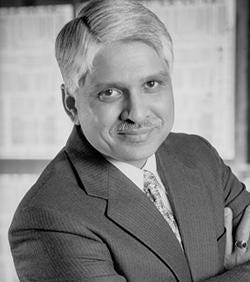IoT Sensor Systems: Start With a Clear Vision of Success
August 25, 2016

Determining the quantities and location of sensors in an Internet of Things (IoT) application requires a thorough problem statement and a clear vision of success, an expert will tell engineers at the upcoming Design & Manufacturing Show in Minneapolis.
Sandhiprakash Bhide, an IoT thought leader and former director of innovation for Intel's Internet of Things Group, will join with other experts in telling attendees that engineers often fail to execute those basics before starting an IoT project. "I've seen examples where people installed all kinds of IoT systems and nothing changed," Bhide told Design News recently. "No benefit was gained. That can give a bad name to the IoT because it means someone didn't think through the problem statement."

Bhide's message, to be delivered at a session called, "Strategic Sensor Installation - Is Less More?" is that there are four basic elements to the design of an industrial IoT system. Engineers should understand the problem and clearly articulate their vision of success, he said. They should also understand what kinds of sensors will be needed and how widely those sensors should be deployed.
"You have to do all of that up front, so that later on you don't have headaches," Bhide told us.
 Sensor Best Practices Learn how sensors can create an extra pair of eyes in your lean machine architecture during Sandhiprakash Bhide's Industry 4.0 session "Developments in Sensors for Automation & Inventory Control" at Design & Manufacturing. Sept. 21-22, 2016 in Minneapolis. Register here for the event, hosted by Design News’ parent company UBM.
Sensor Best Practices Learn how sensors can create an extra pair of eyes in your lean machine architecture during Sandhiprakash Bhide's Industry 4.0 session "Developments in Sensors for Automation & Inventory Control" at Design & Manufacturing. Sept. 21-22, 2016 in Minneapolis. Register here for the event, hosted by Design News’ parent company UBM.
The session, scheduled for Sept. 22 at 10:30 a.m. at the Minneapolis Convention Center, will also include panelists Paul Heine of Sick Inc., Allan Hottovy of Schneider Electric, and Elliot McCarthy of Omron. Christine Frank of Dell will moderate. A key question to be addressed at the session will be about the necessary quantity of sensors -- are engineers using too few or too many?
To accomplish that, Bhide said, engineers need to view their IoT systems through the lens of cost-benefit. "You have to think about it as an asymptotic curve," he told us. "The more sensors you use, the better coverage you have. But at a certain point, if you go from 98% to 98.5% (coverage), the additional cost is not worth it."
The difference between success and failure often comes down to a clear problem statement, Bhide said. Whether users want to reduce warehouse traffic, count material more accurately, or improve health and safety, they need to first have a thorough understanding of the problem and the goals. And from that, they can more effectively calculate the economics of their solution.
"At the end of the day, it's all about economics," he said. "You can increase the top line or reduce the bottom line. Both can be done using a range of sensors."
READ MORE ABOUT DESIGN & MANUFACTURING MINNEAPOLIS:
Senior technical editor Chuck Murray has been writing about technology for 32 years. He joined Design News in 1987, and has covered electronics, automation, fluid power, and autos.
About the Author(s)
You May Also Like



